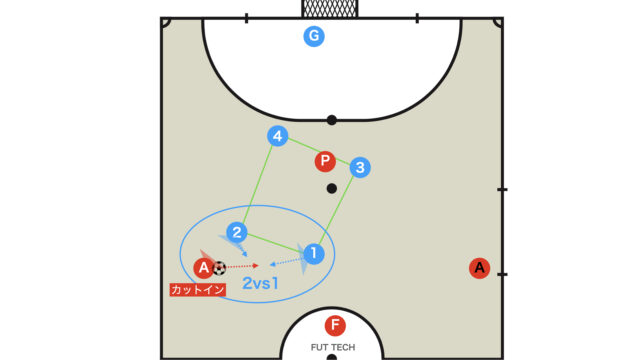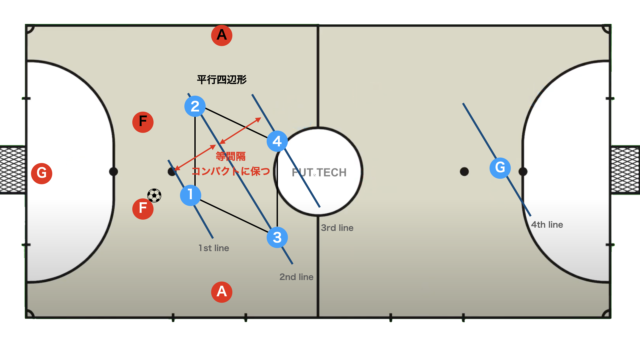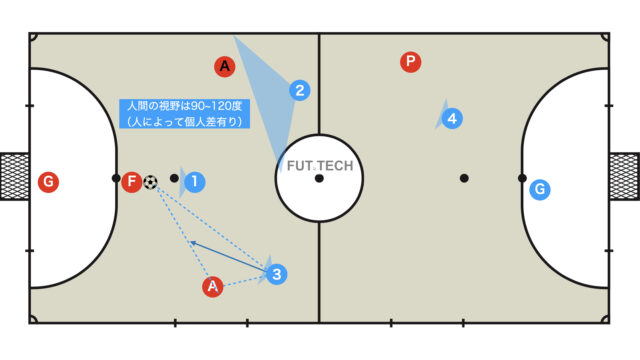Setting the Pressing Line
When implementing positional defence, it is crucial to establish a pressing line in advance that determines where to start applying pressure.

Broadly speaking, a front press is employed in the attacking third, while in other areas a push from the half is used.
(The boundary here is subject to individual interpretation)
Front Press

- Once the ball is won, a shot can be taken immediately in front of the goal (short counter).
- It can impose psychological pressure on the opponent.
- It gives the opponent vast space.
- The distance between players may become too great, sometimes hindering adequate covering.
- After winning the ball, there is little space.
Half
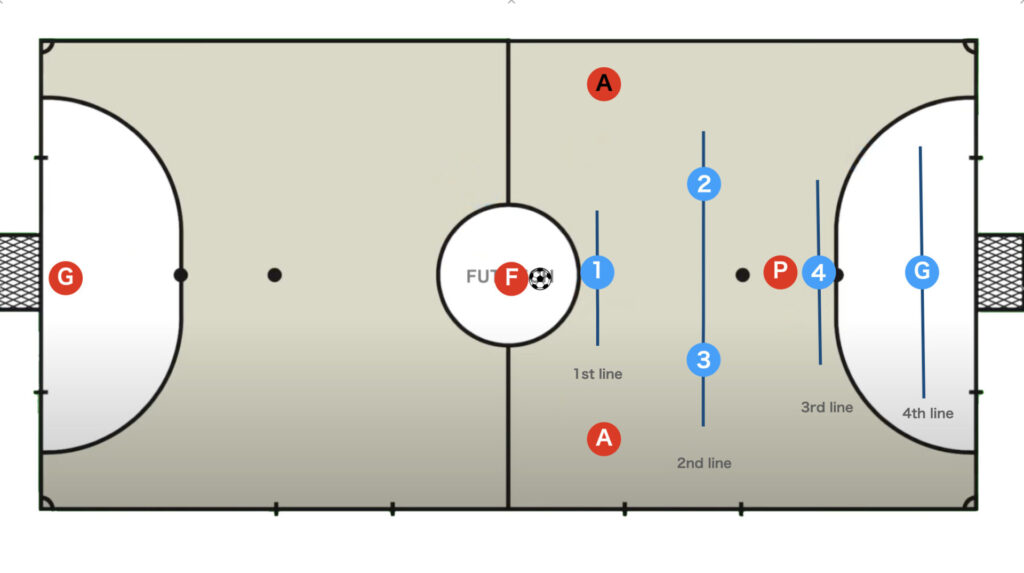
- The close spacing among defenders makes the defensive organization compact and easier to cover.
- It can limit the space available for the opponent.
- There is ample space to transition into a counter-attack.
- Because the goal is nearby, the opponent is provided with more shooting opportunities.
- After winning the ball, players are far from the goal.
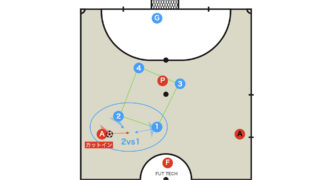
Four Types of DF
- Man-to-man
- Zone
- Mix (Man-to-man + Zone)
- Alternative
Man-to-man DF: Clearly Define Each Mark
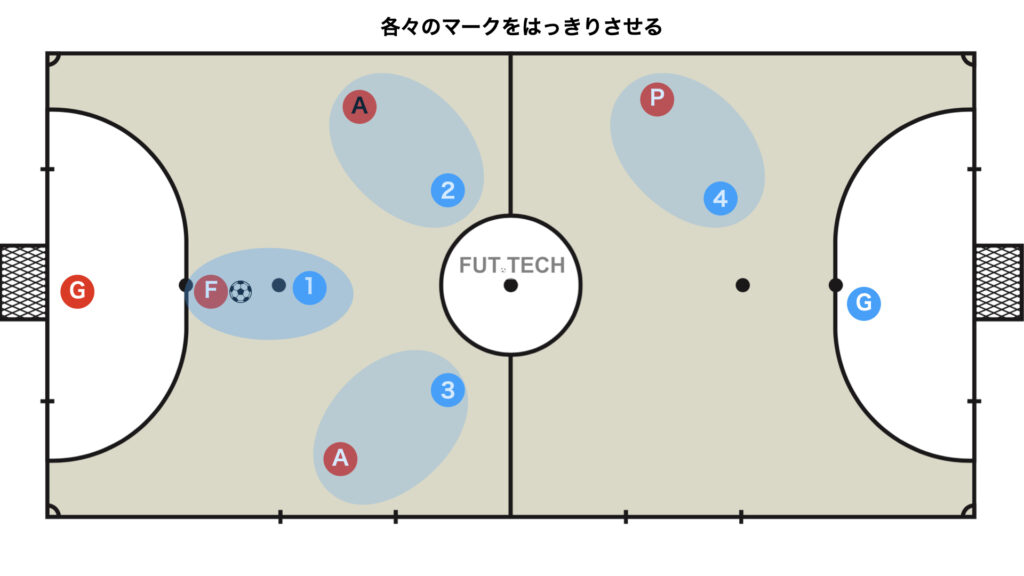
A DF in which each player is responsible for marking their own opponent.
If executed by a team with sufficiently skilled individuals, it is a very effective tactic. However, if inexperienced players attempt it, it can collapse easily; thus, while it may seem simple, it is actually challenging.
- Simple and can be executed without hesitation. (Easy to implement within the team)
- Since marking is continuously maintained, continuous pressure can be applied to the opponent’s offence.
- The responsibility of each player is clearly defined.
- It relies heavily on individual ability.
- It tends to adjust to the opponent’s formation, thereby allowing them to create space.
- When an individual is beaten, there is often no support (cover) available.
- It is extremely physically demanding.
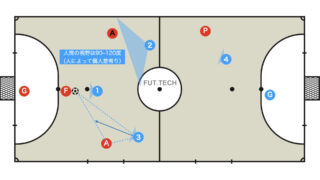
Zone DF
A DF in which each player is assigned a predetermined zone to defend.
Although commonly used in soccer, virtually no futsal team employs a perfect zone DF in positional defence.
(It is, however, frequently used in set-pieces.)
However, the concept of defending by zones is an important idea that can be applied in various contexts.
- It can reduce energy consumption.
- Facilitates a quick transition to a counter-attack.
- Local numerical disadvantages can easily occur.
- It is difficult to predict and respond to rapid transitions.
- Until the opponent reaches the defensive area, the initiative is lost.
Box-shaped Zone
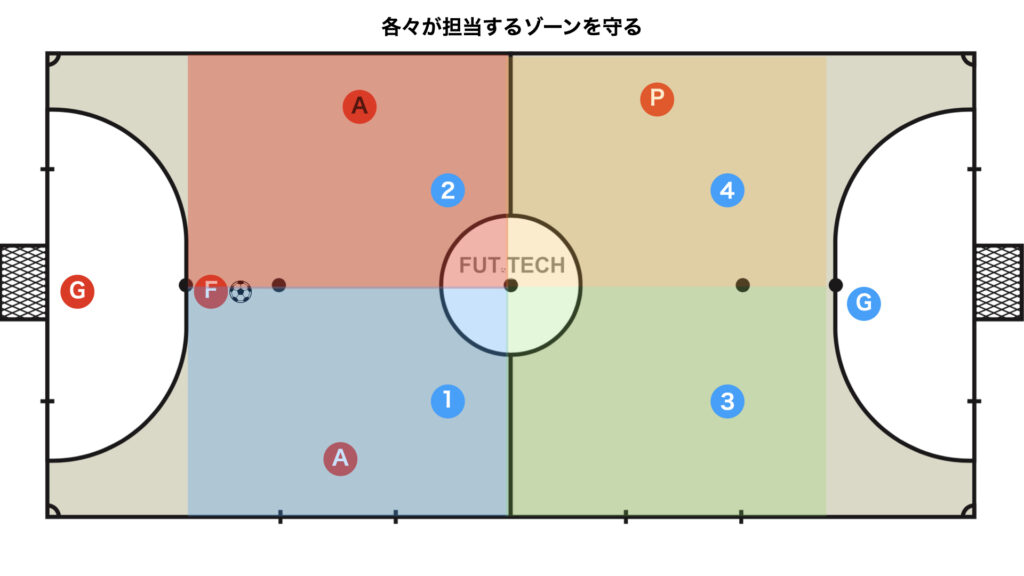
Defend the assigned zone using a box-shaped formation.
Y-shaped Zone

Defend the assigned zones in a Y-shaped formation.
Mix DF: Man-to-man + Zone
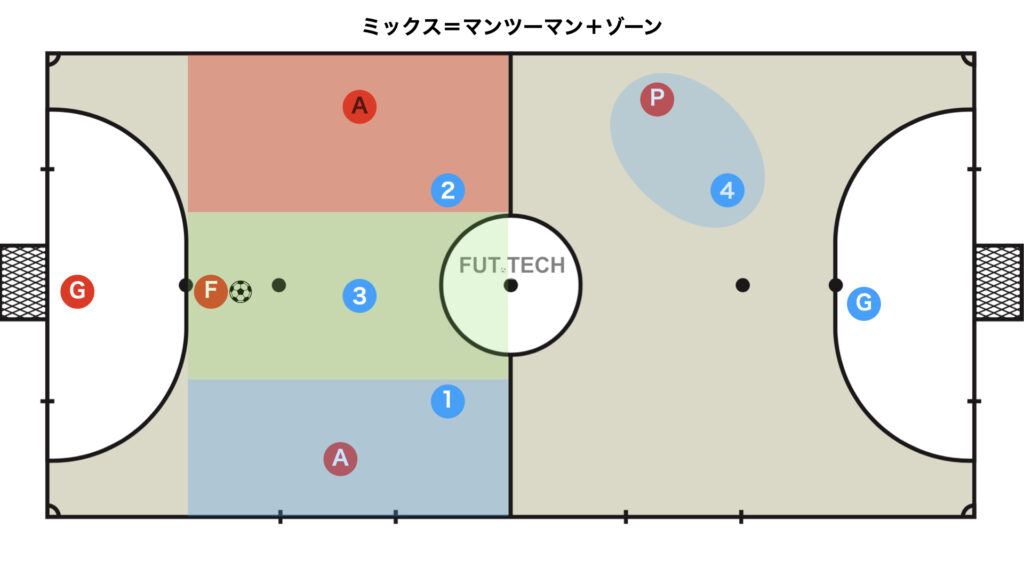
Mix DF is a combination of the previously explained man-to-man and zone strategies.
Although it is rarely used in positional defence, it is frequently employed during corner kick defence in a formation known as “Triangle One”.
Alternative (Selective) DF
Alternative DF is also known as mark change pressing. (Some distinguish it from the original.)
The term “alternative” implies selectivity, meaning that players choose to change marks based on the situation at hand.
When Under Press: Hold
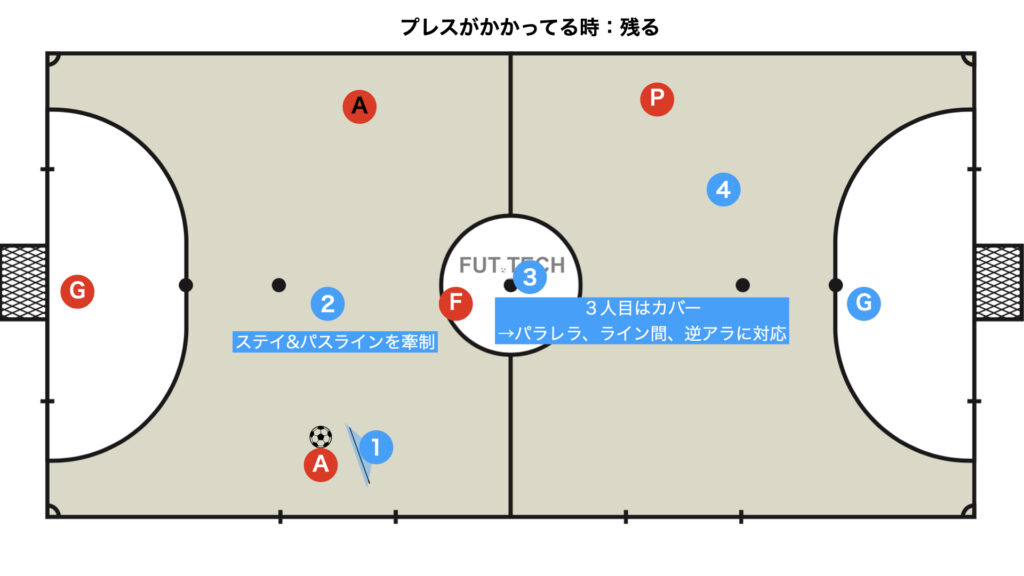
When Not Under Press: Follow
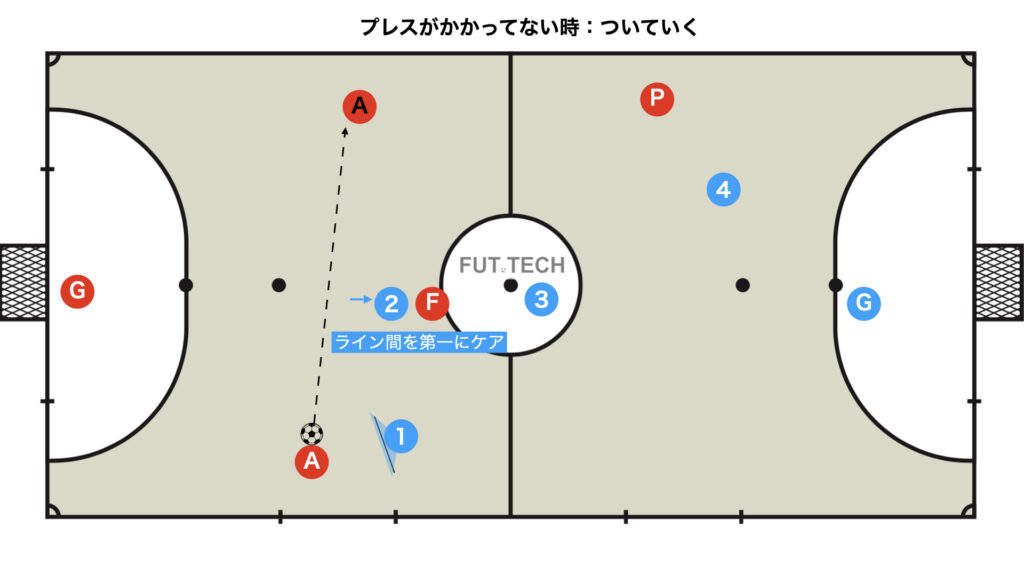
Constructing Multiple Lines
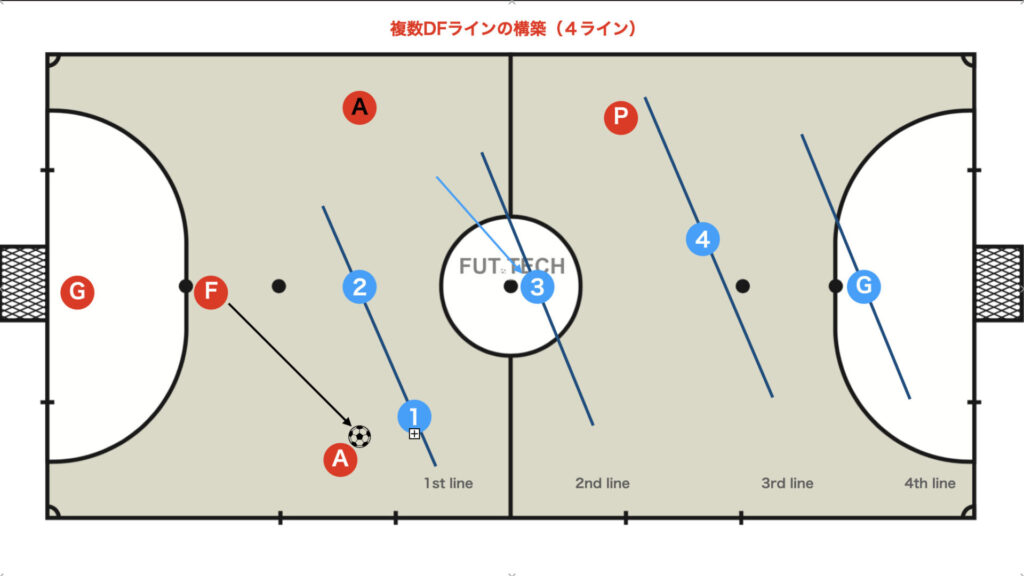
In futsal, constructing multiple lines in defence is an extremely important concept and is indispensable when planning an offence.
In the diagram above, blue #3 squeezes (floats) to create a 2nd line between the 1st line and the 3rd line formed by blue #4.
Especially when applying a front press in the attacking third, the squeeze by the third player is highly valued.
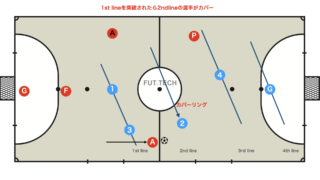
Countermeasures for a Collapsed Defensive Organization
- Slide
- Rotation (Turn)
- Retreat
Slide
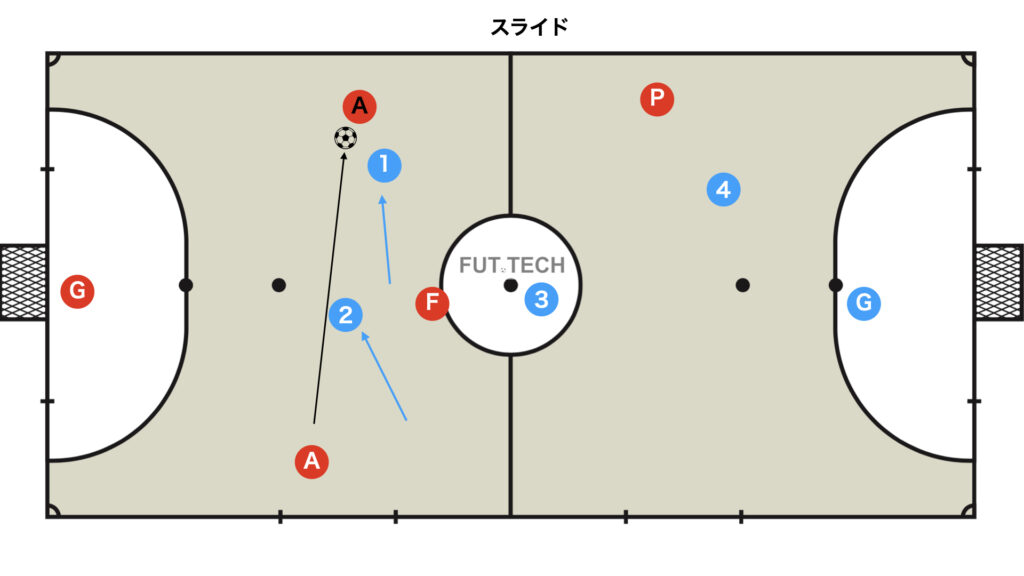
This involves an exchange of roles between two defenders.
This method is often employed when a defence built on multiple lines is subjected to a significant side change.
Rotation
Front Press: 3-man Rotation
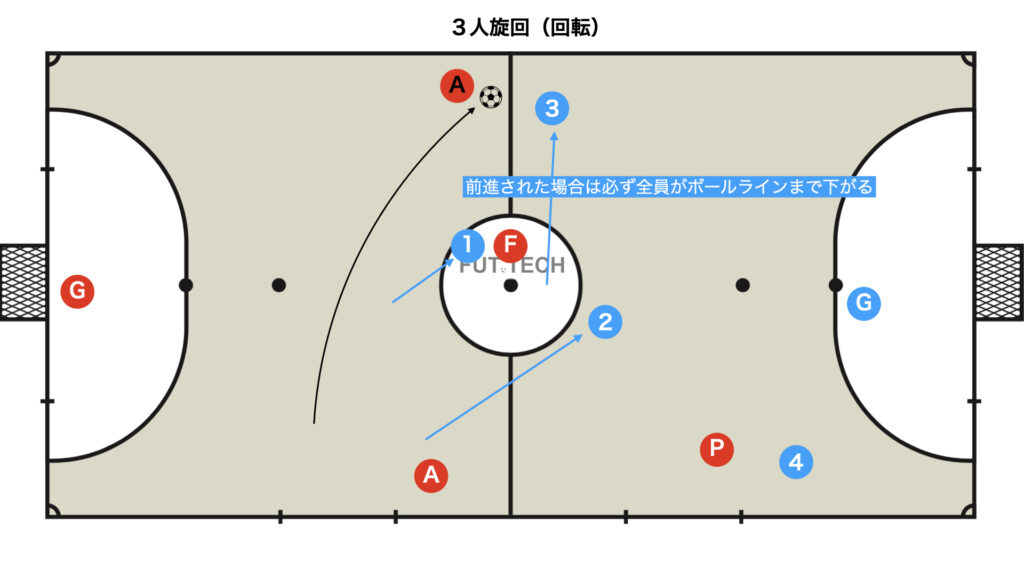
This involves an exchange of roles among three players.
It is used when the front press is evaded, allowing the opposition to advance significantly.
Half: 4-man Rotation
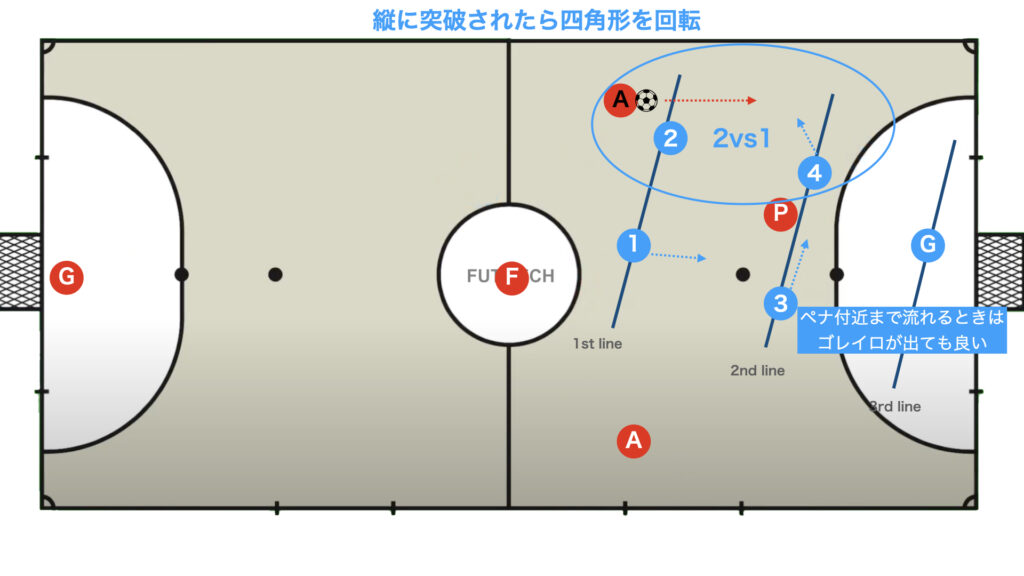
Four players shift their positions and rotate their roles.
This tactic is used in the rotational quadrilateral defence in the half press.
Retreat
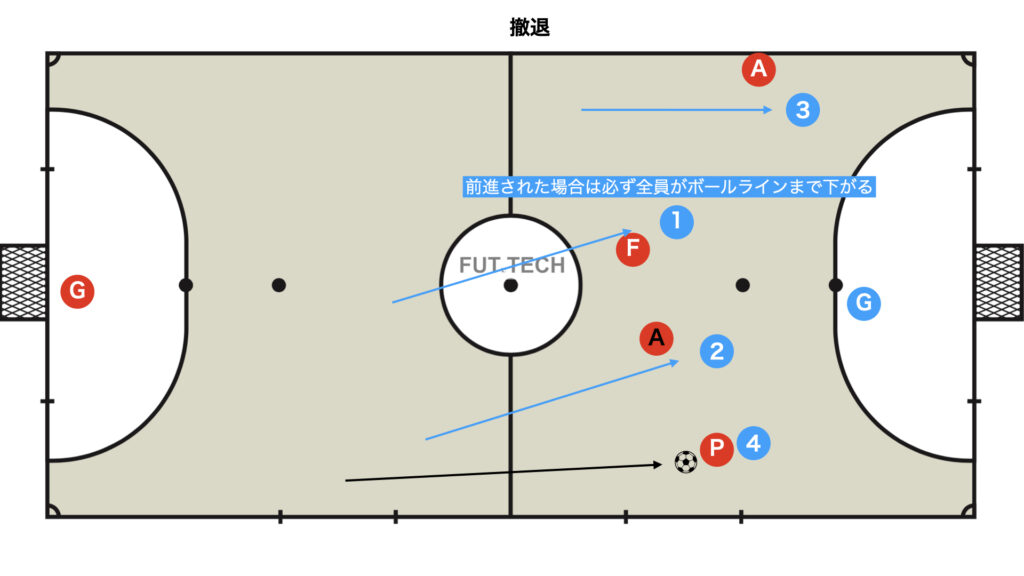
When targeted by the pivo, retreat to the ball line.
DF that Traps the Opponent
If you only follow the opponent’s attack, they will retain possession indefinitely; therefore, it is essential to take action to win the ball at some point.
When the 1st DF is Pressing: 2nd DF’s Interference with the Passing Lane
When the 1st DF is effectively pressing, the pass lane to the rear is cut off, so the remaining space is simply blocked.
Double Team
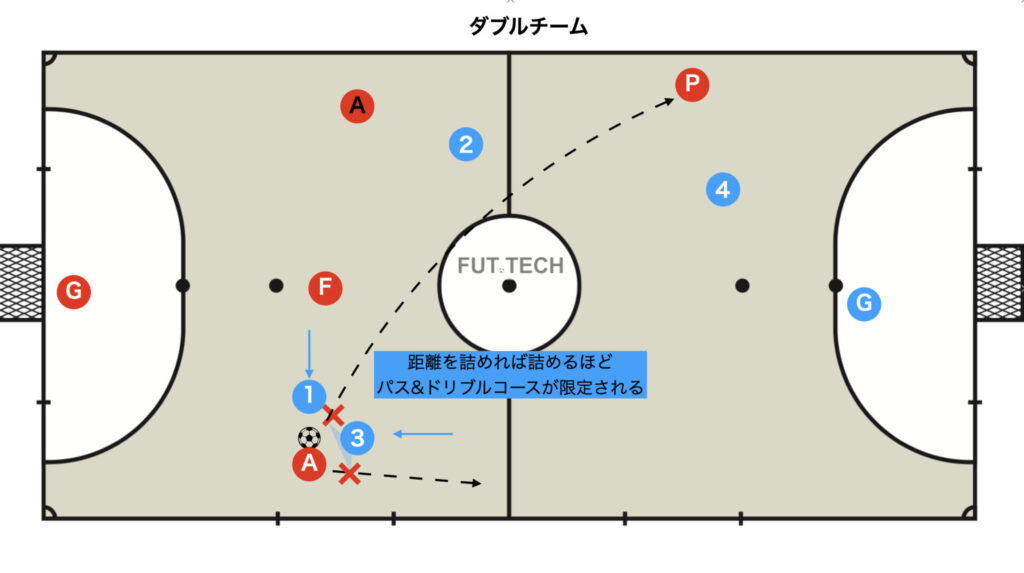
Essentially the same as blocking the passing lane mentioned earlier, this defensive tactic—where two players surround the opponent and directly go to win the ball—is called Double Team.
Thank you very much for reading this article to the end.
If you found this article useful, please consider sharing it using the social media share buttons above.
We regularly share valuable insights on futsal tactics on Twitter, so if you haven’t followed us yet, we’d appreciate your support!
We are committed to raising the level of futsal in Japan by sharing high-quality information through discussions with individuals who have coaching experience in the F.League and overseas.
If you have any questions or notice any mistakes, feel free to leave a comment below.
We update our articles regularly, so if you’d like to keep reading, please bookmark our site or search for “FutTech”!
